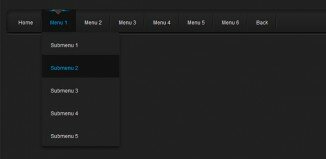Definition and Usage
The CSS flex-direction property specifies how flex items are placed in the flex container defining the main axis and the direction (normal or reversed).
Note that the value row and row-reverse are affected by the directionality of the flex container. If its dir attribute is ltr, row represents the horizontal axis oriented from the left to the right, and row-reverse from the right to the left; if the dir attribute is rtl, row represents the axis oriented from the right to the left, and row-reverse from the left to the right.
- Initial row
- Applies to flex containers
- Inherited no
- Media visual
- Computed Value as specified
- Animatable no
- Canonical order the unique non-ambiguous order defined by the formal grammar
Syntax
Formal syntax: row | row-reverse | column | column-reverse
flex-direction: row flex-direction: row-reverse flex-direction: column flex-direction: column-reverse flex-direction: inherit
Values
The following values are accepted:
- row
- The flex container's main-axis is defined to be the same as the text direction. The main-start and main-end points are the same as the content direction.
- row-reverse
- Behaves the same as row but the main-start and main-end points are permuted.
- column
- The flex container's main-axis is the same as he block-axis. The main-start and main-end points are the same as the before and after points of the writing-mode.
- column-reverse
- Behaves the same as column but the main-start and main-end are permuted.
Examples
element {
flex-direction: row-reverse;
}
Compatibility
Desktop browsers
| Feature | Firefox (Gecko) | Chrome | Internet Explorer | Opera | Safari |
|---|---|---|---|---|---|
| Basic support | 18.0 (18.0) (behind a pref) 20.0 (20.0) |
21.0-webkit | Not supported | 12.10 | Not supported |
Mobile browsers
| Feature | Firefox Mobile (Gecko) | Android | IE Phone | Opera Mobile | Safari Mobile |
|---|---|---|---|---|---|
| Basic support | NA | NA | Not supported | 12.10 | Not supported |





